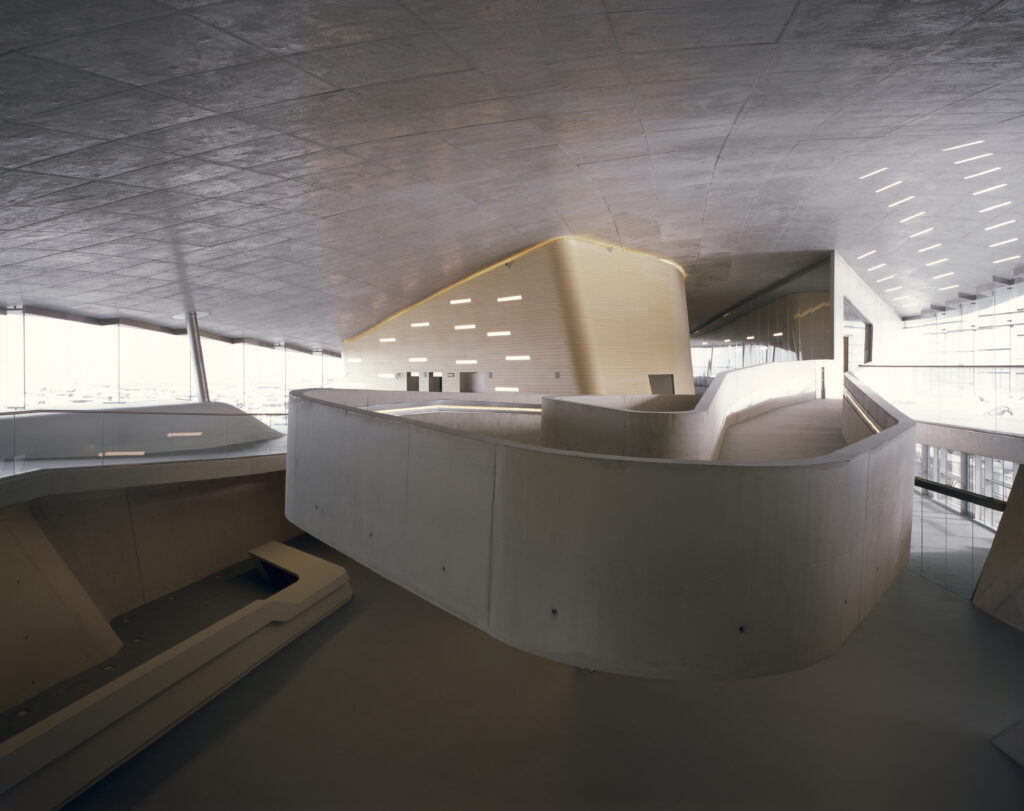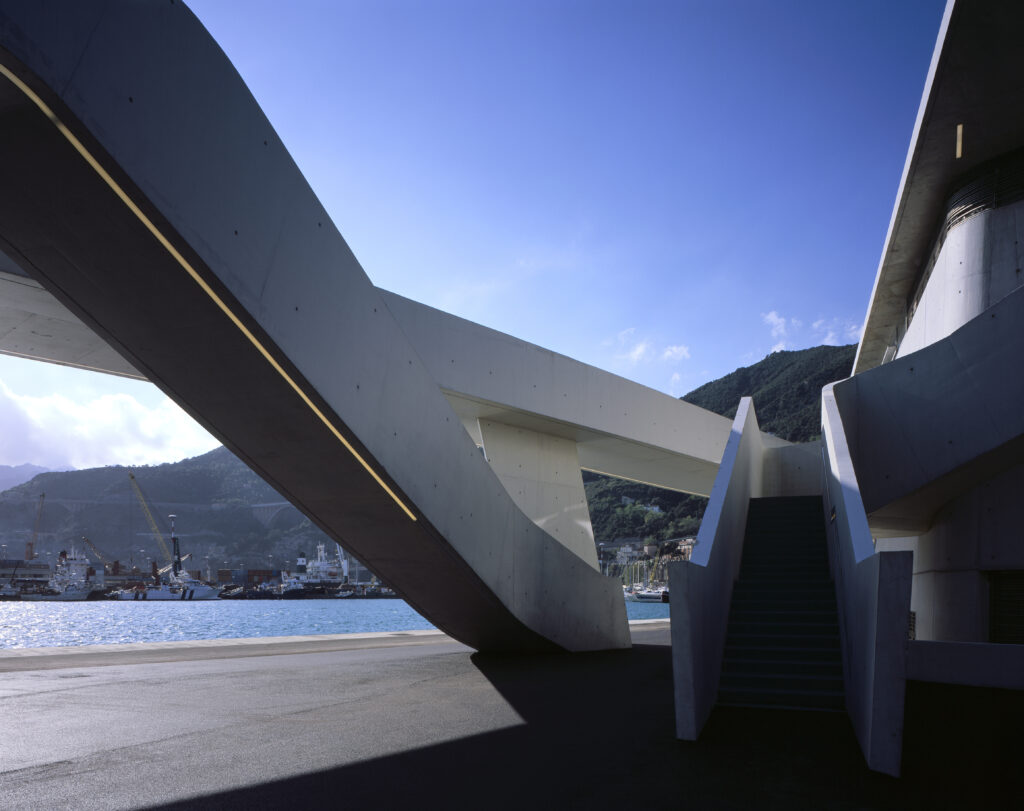Zaha Hadid’s cruise terminal reframes the role of the pier as indeterminate terrain, mediating between land, sea and sky
Pleasure piers were originally mooring jetties for ships bringing trippers to seaside resorts, evolving into more complex organisms over time. The first building to be completed after her death in 2016, Zaha Hadid’s cruise terminal in Salerno reframes the role of pier as indeterminate terrain, mediating between land, sea and sky. Its elongated, ship-like structure flows and warps along the waterfront, penetrated by a network of ramps and canted floor planes conveying passengers from dockside to liner.
Like all Hadid’s work, it is conspicuously an object-building, calculated to draw attention to itself and Salerno, with the aim of reviving the port’s fortunes. Yet wrapped in a rippling manta ray roof, the building makes perfect sense in the context, extemporising on existing dockside types and designed on the basis of people flowing through it, which gives it a curious dynamism.
All photographs by Hélène Binet
This case study is part of Typology: Pier. Read the full article here
 The Architectural Review An online and print magazine about international design. Since 1896.
The Architectural Review An online and print magazine about international design. Since 1896.











